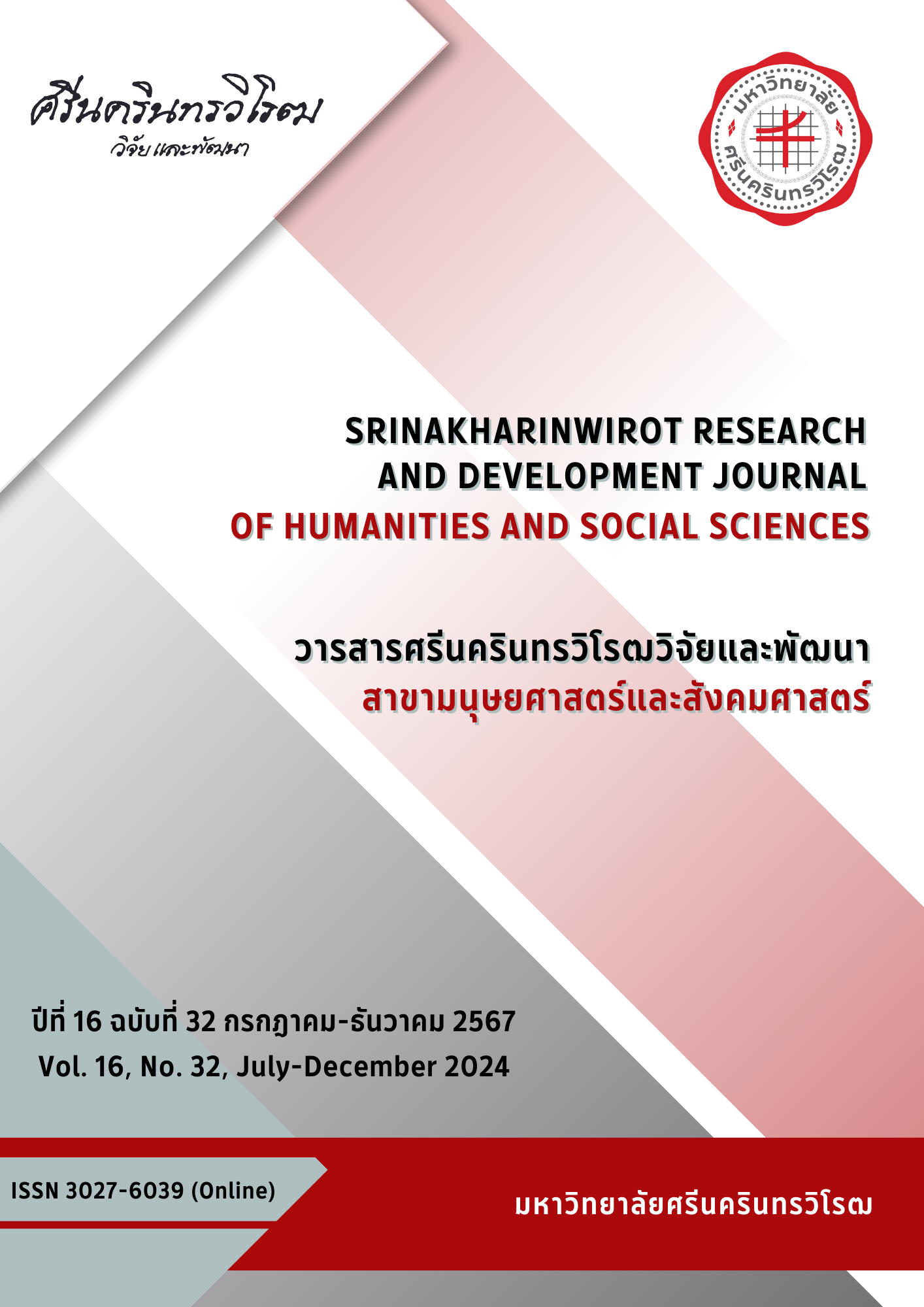STUDY OF PROBLEM-SOLVING ABILITY ON ADDITION, SUBTRACTION, MULTIPLICATION, AND FRACTION USING POLYA’S PROBLEM-SOLVING PROCESS WITH GRAPHIC ORGANIZER INSTRUCTIONAL MODEL FOR THIRD GRADE STUDENTS
Keywords:
Learning Management Using Polya’s Problem-Solving Process, Learning Management Using Graphic Organizer Instructional Model, Problem Solving AbilityAbstract
The purposes of this research were 1) study the ability and learning achievement of the third-grade students to solve problems on addition, subtraction, multiplication, and fraction after using Polya’s problem-solving process with Graphic Organizer Instructional Model. The sample group of this research was 30 of third-grade students in the first semester of 2022 academic year from Watsawangmanus School, Lang Suan District, Chumphon. They were selected by using Cluster Random Sampling. The instruments of this research were (1) the lesson plans on problem-solving questions of addition, subtraction, multiplication, and fraction of the third-grade students using Polya’s problem-solving process with Graphic Organizer Instructional Model, with an appropriateness average of 4.49 – 4.84, (2) a test of problem-solving ability, with the Index of Consistency (IOC) between 0.67-1.00, difficulty (p) between 0.47-0.63, discriminating power (r) between 0.27-0.63 and the reliability of the whole version equal to 0.74. and (3) learning achievement tests, with the Index of Consistency (IOC) between 0.67-1.00, difficulty (p) between 0.470-0.60, discriminating power (r) between 0.20-0.53 and the reliability of the whole version equal to 0.87. Statistics used in data analysis were percentage, mean, standard deviation, t-test for one sample and independent t-test for dependent samples. The research findings were as follows. The ability and learning achievement to solve problems on addition, subtraction, multiplication, and fraction of the third-grade students after being taught using Polya’s problem-solving process with Graphic Organizer Instructional Model were 75.36 and 80.00 respectively, was higher than the criterion of 70 percent with a statistically significant of the 0.05 level.
Downloads
References
กระทรวงศึกษาธิการ. (2560). ตัวชี้วัดและสาระการเรียนรู้แกนกลาง กลุ่มสาระการเรียนรู้คณิตศาสตร์ (ฉบับปรับปรุง พ.ศ. 2560) ตามหลักสูตรแกนกลางการศึกษาขั้นพื้นฐาน พุทธศักราช 2551. กรุงเทพฯ: โรงพิมพ์ชุมนุมสหกรณ์การเกษตรแห่งประเทศไทย จำกัด.
โรงเรียนวัดสว่างมนัส. (2562). หลักสูตรสถานศึกษาโรงเรียนวัดสว่างมนัส กลุ่มสาระการเรียนรู้คณิตศาสตร์ ตามหลักสูตรแกนกลางการศึกษาขั้นพื้นฐาน พุทธศักราช 2551 (ฉบับปรับปรุง 2560). ชุมพร: กลุ่มสาระการเรียนรู้คณิตศาสตร์ โรงเรียนวัดสว่างมนัส.
กฤษฎา วรพิน. (2562). การพัฒนากระบวนการเรียนการสอนตามแนวคิดการตั้งปัญหาและการคิดแบบฮิวริสติกส์ เพื่อส่งเสริมความสามารถในการแก้โจทย์ปัญหาคณิตศาสตร์ของนักเรียนระดับมัธยมศึกษาตอนต้น. วารสารครุศาสตร์ จุฬาลงกรณ์มหาวิทยาลัย, 47(1), 1-20.
สถาบันส่งเสริมการสอนวิทยาศาสตร์และเทคโนโลยี. (2560). คู่มือครูรายวิชาพื้นฐานคณิตศาสตร์ ชั้นประถมศึกษาปีที่ 3 เล่ม 1 ตามมาตรฐานการเรียนรู้และตัวชี้วัด กลุ่มสาระการเรียนรู้คณิตศาสตร์ (ฉบับปรับปรุง พ.ศ. 2560) ตามหลักสูตรแกนกลางการศึกษาขั้นพื้นฐาน พุทธศักราช 2551. https://www.scimath.org/ebook-mathematics/item/11607-3-1-11607
สถาบันส่งเสริมการสอนวิทยาศาสตร์และเทคโนโลยี. (2553). เอกสารสำหรับผู้รับการอบรมครูผู้สอนคณิตศาสตร์ที่เน้นกระบวนการคิดวิเคราะห์และแก้ปัญหา ชั้นประถมศึกษาปีที่ 1- 6. กรุงเทพฯ: โรงพิมพ์ สกสค.
ทิศนา แขมมณี. (2553). ศาสตร์การสอน : องค์ความรู้เพื่อการจัดกระบวนการเรียนรู้ที่มีประสิทธิภาพ. กรุงเทพฯ: บริษัท ด่านสุทธาการพิมพ์ จำกัด.
Ryan, T. P. (2013). Sample size determination and power. Hoboken, New Jersey: John Wiley & Sons.
Downloads
Published
How to Cite
Issue
Section
License
Copyright (c) 2024 Srinakharinwirot Research and Development Journal of Humanities and Social Sciences

This work is licensed under a Creative Commons Attribution-NonCommercial-NoDerivatives 4.0 International License.
Srinakharinwirot Research and Development Journal of Humanities and Social Sciences is licensed Under a Creative Commons Attribution-NonCommercial-NoDerivs 4.0 International (CC-BY-NC-ND 4.0) License, Unless Otherwise Stated. Please Read Journal Policies Page for More Information on Open Access, Copyright and Permissions.



